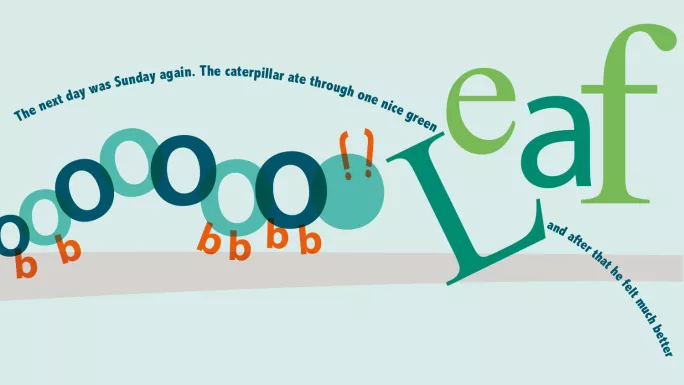- Home
- What teachers need to know about shared reading
What teachers need to know about shared reading

Picture the scene: I’m squeezed into my seat on a packed train with no room to open my laptop or reach into my bag to pull out a book, phone, newspaper - anything to offer distraction.
Across from me, a father and his toddler daughter start to look at a book together. I close my eyes and tune in to what’s happening.
The girl has heard the story before and demands a particular starting page.
“What happened in the story before?” her dad asks.
Something gets recited and then he begins to read, stopping and starting with asides and commentary. He speeds up and slows down; the animal characters have different voices. She bangs the book and insists on turning the page.
They are in their own world, full of words and wonder, unaware, I hope, that the woman opposite is taking mental notes.
We know that “shared reading” matters. Study after study shows that children vary enormously in the amount of shared reading they experience in the preschool years. In turn, this variation is associated with language and literacy development once they get to school.
We also know that the amount and quality of shared reading is associated with social advantage. This means that some children are starting school from a position of serious disadvantage when it comes to later language and literacy learning, and all that follows from that.
Listening in on the train, I was aware of these general findings, and some of the explanations for why shared reading does so much to support development. Some people have argued that shared reading encourages good reading habits, a more positive attitude to reading, and reading for pleasure. Others have focused on the critical role of extra-text talk - how caregivers might scaffold their child’s language by making links, emphasising words and explaining concepts.

Relatedly, shared reading fosters language use that is more decontextualised - for example, asking questions, reflecting on what happened before and predicting what might happen next all provide opportunities to move away from the here and now.
All of these features were at play as I eavesdropped. But what also struck me was the content and style of the text itself - the fact that the language used in written text can differ markedly to what is heard in everyday conversation.
It got me thinking: could the nature of this “book language” play a critical role in helping us to properly understand why shared reading matters for language and literacy development? And if so, what might that mean for how we promote and teach reading, both in the home and at school?
Let’s leave the father and his daughter reading on the train and consider our own experience of language in conversations and when reading. Think of a recent conversation you’ve had, or pause to listen to one now, and then imagine it written down, verbatim. How similar is it to language that has been written to be read - the text that you might read in a textbook, novel or newspaper?
Reading vs listening
Formal analyses by linguists reveal quite big language differences between reading and listening, especially when the comparison is between formal text and everyday conversation. Spoken language is generally “in the moment” and in the context of social interaction. When we listen to language, we’re privy to an entire repertoire of features that help us comprehend the message: tone of voice and speed of delivery, for example. We might be able to see the speaker, their gestures and facial expressions; in face-to-face conversation, the speaker can monitor our responses, adjusting their output if miscomprehension is suspected.
Text, by contrast, is remote. It cannot rely on situational cues or shared context to deliver its message. Instead, the language itself has to do the leg work, and this means text tends to be more formal and more linguistically complex. When we write (or read), we use more words, longer words and a greater range of different words than when we listen (or speak).
We also use different patterns of grammar; some syntactic structures are rare in speech but common in writing. Take for example “the book that was read by the woman”, a complex sentence that contains a relative clause in the passive voice. It’s not difficult to understand and we encounter such sentences quite regularly - but virtually always when reading, not when listening. Such increases in linguistic complexity enable sufficient specification in the text, so that the person reading it can reconstruct its meaning.
It’s fascinating to note that complex syntax tends to be a property of languages that have a writing system. Languages change and evolve over time, and for European languages, written language is a relatively recent cultural invention. Julie Sedivy, writing in the magazine Nautilus, considers how the onset of writing might have brought about linguistic evolution. Languages that don’t have an associated writing system rarely combine more than one clause in a sentence, preferring instead to string together a series of simple utterances. Perhaps our language was once like this before literacy reshaped the way we speak, and perhaps even the way we think.
The more children read and the more widely they read, the more exposure they have to the language of the book. This sets the foundation for acquiring knowledge and learning across the entire curriculum, and for becoming adept at writing and oracy, using the language of the book productively to communicate effectively to others with clarity and authority.
But of course, we don’t have to read to experience book language. Classrooms offer many opportunities to experience more formal or academic forms of language. And the little girl on the train was listening to her father - she was able to access the story’s vocabulary and syntax, despite not being able to read it herself.
But how different is the language of a book aimed at this age group to other forms of communication in the early years of education? What struck me as I listened on that train journey was the linguistic complexity of the language the girl was hearing as her father read. One might imagine that the language in books written for such young children would be identical to the spoken language they hear - that authors might pitch the vocabulary and syntactic structures to match those familiar to the child. But research shows that this is not the case.
Lexical diversity
Jessica Montag, now at the University of California, Riverside, and her colleagues, collated vocabulary content from more than 100 books written for preschoolers, counting the number of words and the number of different words. They did the same for child-directed speech - samples of language taken from interactions between adults and children in the home or the nursery. The differences were striking. Not only were there more words in text than conversation, but text was more lexically diverse - it contained more different words. Shared reading allows preschoolers to experience words they wouldn’t otherwise encounter.
Only a few studies have looked in detail at the syntactic complexity of books written for preschoolers, but the same conclusion holds: shared reading provides children with language experience that is different to everyday conversation.
Thea Cameron-Faulkner and Clare Noble from the University of Manchester analysed the content of 20 books, taken from Amazon bestseller lists, aimed at two-year-olds. In general, the books contained more complex sentences than child-directed speech.

Similar findings were reported by Jessica Montag and Maryellen MacDonald, who showed once again that books written for children contained more complex syntax than child-directed speech. In addition, their analyses showed that children’s books, while not as grammatically complex as books for adults, were in some respects more complex than day-to-day conversational speech between adults.
Alongside the content and style of book language itself, adults’ speech while engaged in shared reading is also more complex than their everyday conversation. In a follow-up study, Noble and colleagues showed that even very simple picture books induced parents to use more complex language in their extra-text talk, compared with the language they used when playing with their child.
So the father reading with his daughter on the train was, whether he knew it or not, doing far more than keeping an active toddler occupied while killing time on a long journey. His language and conversational style, working in concert with the language of the book, was providing rich input from which his daughter could learn.
The amount and quality of shared reading that a child experiences in the preschool years is positively associated with their later language development and school success. It’s not difficult to see why.
As we’ve seen, books written for preschoolers are written in rich book language, beyond that which is experienced through everyday conversation. And that’s before we add in other positive features commonly seen in shared book reading episodes:
*Books can be read and reread, repeatedly (research by Jessica Horst and colleagues at the University of Sussex shows the importance of repetition for word learning via shared reading).
*A dialogical style with questions, points and prompts provide much extra-text talk and reflection.
* Shared reading is an opportunity for one-to-one attention and quality time, emotional bonding and enjoyment.
But how about children who don’t receive adequate shared-reading opportunities in the preschool years? We know that there is substantial variation from infancy onwards, with some children being read to only occasionally, and others on a daily basis. There are differences in quality, too, in terms of the range of material read and the amount of extra-text talk provided.
A lack of shared-reading experience might matter more for some children than others. Using longitudinal data from 17,687 children participating in the UK’s Millennium Cohort Study, James Law and colleagues examined the relationship between shared reading at ages 3 and 5, and language outcomes at age 11. As well as a general association across the entire sample, they found a larger effect at the lower end of the language distribution. For those children with lower levels of language, shared reading experience was especially beneficial.
It’s tempting here to see a correlation between the amount of parent-child shared reading and children’s language outcomes, and come to the conclusion that inadequate parenting somehow directly causes poor language. That would be wrong.
As with any correlation, logic tells us that the relationship might work in the opposite direction, with a child’s own language level setting the pace for the amount and quality of shared reading. Bidirectional, reciprocal relationships are also possible, with shared reading bootstrapping language to promote more fruitful shared reading - or less positively, a downward spiral for those not so fortunate.
Another temptation is to point a blameful finger at parents who don’t read with their toddlers and assume that if only they did, all would be well. That’s misleading. Shared reading, the number of books in the home, membership of libraries and so on, are all associated with differences in educational and social advantage. Social disadvantage reflects issues that are systemic and complex - issues that no doubt require systemic and complex solutions. A simple call “to read more” is clearly insufficient.
It’s also important to remember that parents don’t just create an environment for their child. Genes are also at play, for language is a heritable trait. This means that the shared reading environment a parent provides might reflect their own capabilities, passed to their child via biology as well as culture.
This shouldn’t be interpreted as bleak and deterministic - the fact that differences between people in language proficiency are associated with genetic differences between people does not mean that education or social provision is doomed to failure. Far from it. Working hard to optimise intervention and education becomes all the more important, not less.
As Kathryn Asbury from the University of York wrote in Tes last year, heritability estimates “do not predetermine anything… I can gain a couple of inches by wearing heels or I can correct my vision by wearing glasses, both regardless of my genetic predispositions” (you can listen to Asbury talking about the role of genetics in education on the Tes Podagogy podcast at bit.ly/PodAsbury).
Enhancing opportunities
So how can we increase shared-reading opportunities for young children in the home in the preschool years?
Progress is being made, as showcased by nationwide initiatives such as the BookTrust’s Bookstart programme, which gives books for babies, along with tips and guidance for their parents to support shared reading. Championing “nudge” ideas, McDonald’s and easyJet have provided creative solutions to making books more available to young children by placing them in meal deal boxes and in the pocket of airplane seats on popular holiday flights respectively.
Inspiring as these initiatives are, research tells us that gains from intervention programmes are hard won, especially for families from less advantaged social and economic backgrounds. In a recent randomised control trial with such families, Jamie Lingwood, Josie Billington and Caroline Rowland from the University of Liverpool monitored the effectiveness of a shared-reading intervention, designed for parents and their preschool children, and focusing on enjoying shared reading. Children’s vocabulary did not improve.
Lingwood and colleagues discuss the non-trivial challenges of engaging families and encouraging them to engage in more shared-reading practice at home. They note that it is possible to promote a positive shared-reading culture and for this to have positive effects on language development, but more intensive, longer-term support is needed.
Even with intensive community provision in the preschool years, shifting language is hard. In a recent blog, professor Daniel Willingham of the University of Virginia discusses the findings of research led by Susan Neuman, conducted in childcare centres in high-poverty urban areas in the US. The three- and four-year-olds had year-long access to lots of books in a child-friendly environment; they listened to information texts and had the opportunity for book-related discussion with library staff. Despite this “flood of books”, the children’s language did not improve, relative to a control group.
What was missing? It’s hard to say. One strong possibility is that children need shared interaction with the same trusted adults, extended over time. Partly for emotional reasons, no doubt, to build empathy and reading for pleasure, but also because such continuity allows structure to develop in the input. Parents and children can choose what to read next, opting for something new or revisiting family favourites again and again - an ideal recipe for learning with exposure to new things alongside repetition of old things. This is difficult to mimic in community settings, and all the more so with hard-to-reach families.
School is different, though, and this is why teachers have such an important role to play.
Opportunities for shared reading should not stop when children go to school. Now, though, something different is also needed.
Research on shared reading with young children has shown that it doesn’t provide lessons in learning to read in terms of acquiring knowledge of the alphabet and identifying words. Instead, it provides opportunities to share narrative and learn from oral language, setting the scene for “reading readiness”.
What learning to read an alphabetic language such as English does require is for children to acquire phonic knowledge, and there’s good evidence to suggest that this is best achieved via explicit and systematic phonics teaching.
Decodable texts have an important role to play here. For beginning readers, of course, decodables will tend towards including book language that is restricted and simplified. But what’s gained is the opportunity for children to practise their phonic knowledge and experience success as a reader.
This is not incompatible with calls for “real” or “authentic” texts. Shared reading can and must continue, with texts that challenge and inspire, and bring joy.
Early years classrooms are well placed to help children start to “catch up” on book-language experience. School happens nearly every day. Teachers and teaching assistants offer continuity, and as the year progresses, relationships are built. Regular shared-reading activities seem a must - I’m saddened when I hear teachers say there’s insufficient time in the day to do this. Emphasising the importance of shared reading can only be a good thing.
There’s also an opportunity for something more. Careful selection of texts can maximise exposure to different aspects of book language - language that doesn’t come for free from everyday conversation. More resources could be developed to help teachers structure and plan shared-reading activities, allowing children’s learning to build, informed by an understanding of why and how shared reading promotes language development.
The aim here is not to take the joy out of shared reading, nor limit its scope. Maximising exposure to book language by adding structure and planning content, while exploiting principles such as repetition and variation, can help promote language learning without detracting from the enjoyment. This is not an alternative to phonics and structured activities that teach children how to read words for themselves, directly and explicitly. But it is a vital complement - especially for those children who start school with lower levels of language.
Back to the train, and the journey is coming to an end. The book is closed. The girl packs it away in her bag, proudly and contentedly. I smile and say goodbye.
We had both learned something new.
For references and suggestions for further reading, see readoxford.org/book-language
Kate Nation is professor of experimental psychology at the University of Oxford, and director of both ReadOxford and Language and Cognitive Development Research Group
Keep reading for just £1 per month
You've reached your limit of free articles this month. Subscribe for £1 per month for three months and get:
- Unlimited access to all Tes magazine content
- Exclusive subscriber-only stories
- Award-winning email newsletters